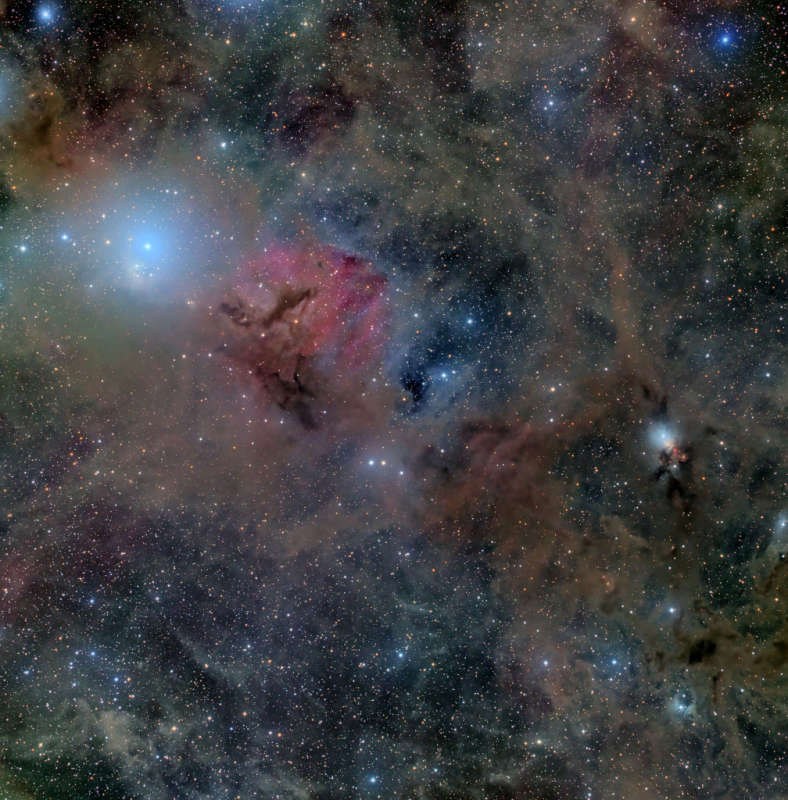Credit & Copyright: Jack Groves
Explanation:
This cosmic
expanse
of dust, gas, and stars covers some 6 degrees
on the sky in the heroic constellation Perseus.
At upper left in
the gorgeous skyscape
is the intriguing young star cluster
IC
348 and
neighboring Flying Ghost Nebula
with clouds of obscuring interstellar dust cataloged
as Barnard 3 and 4.
At right, another active star forming
region NGC 1333 is
connected by dark and dusty tendrils on the outskirts
of the giant
Perseus
Molecular Cloud, about 850 light-years away.
Other dusty nebulae are scattered around the field of view,
along with the faint
reddish glow of hydrogen gas.
In fact, the cosmic dust
tends to hide the newly formed stars
and young stellar objects or protostars from
prying optical telescopes.
Collapsing due to
self-gravity, the
protostars
form
from the dense cores
embedded
in the molecular cloud.
At the molecular cloud's
estimated distance, this field
of view would span over 90 light-years.
1999 2000 2001 2002 2003 2004 2005 2006 2007 2008 2009 2010 2011 2012 2013 2014 2015 2016 2017 2018 2019 2020 2021 2022 2023 2024 2025 |
Yanvar' Fevral' Mart Aprel' Mai Iyun' Iyul' Avgust Sentyabr' Oktyabr' Noyabr' Dekabr' |
NASA Web Site Statements, Warnings, and Disclaimers
NASA Official: Jay Norris. Specific rights apply.
A service of: LHEA at NASA / GSFC
& Michigan Tech. U.
|
Publikacii s klyuchevymi slovami:
reflection nebula - dark nebula - Pylevaya tumannost' - zvezdoobrazovanie
Publikacii so slovami: reflection nebula - dark nebula - Pylevaya tumannost' - zvezdoobrazovanie | |
Sm. takzhe:
Vse publikacii na tu zhe temu >> | |
